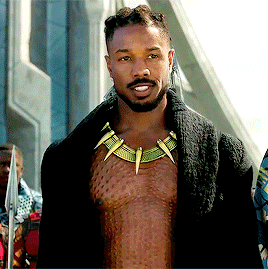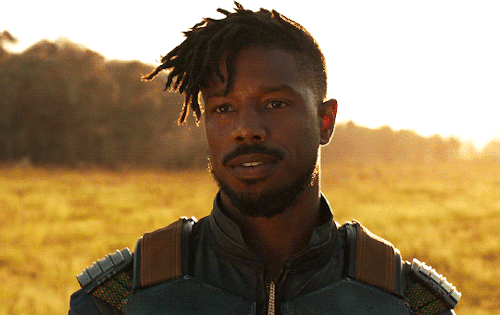3 Books and Movies That Teach You to Better Understand the Supervillain
- Era Writer
- Jul 14, 2019
- 5 min read
Updated: Nov 27, 2020
By Era Writer
Self Love Literature Contributing Writer
I’m working on a new supervillain, and all the character creation and backstory has my inner supervillain senses tingling.

Since the beginning of time, the world has always been fascinated by the lives of superheroes. Spiderman, Superman, Captain America, and Iron Man to state a few. But what if I told you that sometimes the real story, the one that isn’t always shown on the big screen, exists within the cold, distant, and highly misunderstood heart of society’s most unpopular supervillains? Would you believe me? Or continue to mindlessly pledge your allegiance to the God-like beings Hollywood programs so many to serve? Below are 3 books and movies that will help you understand the world’s most notorious supervillains a little more. After all, you can’t judge a villain by their cover, right?
“How The Grinch Stole Christmas,” by Dr. Seuss

The supervillain is often the most misunderstood being in society, and yet at the same time the most ostracized. Take Jim Carrey’s fantastic performance in the 2000 motion picture adaptation of “How The Grinch Stole Christmas,” written in rhymed verse with illustrations created by the author himself. Following the life of an introverted, solitary, highly logical creature named “The Grinch,” who lives on top of the town’s highest cave in Whoville, which just so happens to also be the town’s designated landfill.
Like any typical villainous bad guy, the Grinch devises a sinisterly evil plan to put an end to the town’s Christmas festivities forever by stealing everyone’s Christmas presents while they are sleeping on Christmas Eve. Published by Random House in 1957, the book highlights the commercialization of Christmas and touches on America’s fascination with consumerism, capitalism, and the commercialization of most traditional American holidays. Later adapted in the year 2000, Jim Carry poetically brings the persecution of the Grinch’s identity to life. Forcing young readers to ask themselves why is it that we are taught to cast out people from society just because they are different? A life that The Grinch new all too well.

Thanos from “The Avengers: Age of Ultron,” by Stan Lee. Thanos, perhaps the world’s most popular supervillain of the 21st century, is a bonafide fictional bad-ass first appearing in the infamous American comic book series, The Invincible Iron Man edition #55, published by Marvel Comics in 1973. The character was created by writer/artist Jim Starlin, bringing the mega-villain Thanos to life who would later go on to become one of Marvel Universe’s most powerful Eternals.
Clashing with many heroes including the Avengers, the Guardians of the Galaxy, the X-Men, and the Fantastic 4, Thanos is for sure a stone-cold metaphysical master-mind whose main objective is to eliminate half the world’s population. My initial reaction to such a daunting character was rooted in the notion that Thanos himself was a reflection of the universal mind-control theme fervently cycling throughout Hollywood more formally known as depopulation, with the nebulous agenda to purge humanity of its imperfections. After looking into his character a bit more, I’ve determined that among many horribly terrible things, Thanos is a capitalist. It’s no secret that his business model lies in the regulation of planets, along with the beings that are permitted to inhabit them. And as quiet as it’s kept there are MANY minds and governments worldwide that think just like him.
Though incredibly morbid, his vision for the Universe is deeply rooted in his eternal God-complex. Yet at the same time his ideas when it comes to the world’s population, even today, wouldn’t entirely be considered totally maniacal by a few of the planet’s ‘higher powers.’ Take technology mogul Bill Gates to be precise, who has dedicated over $1 billion for the distribution of birth control and contraception to developing countries. In the year 2012 alone, the Bill & Melinda Gates Foundation collected $2 billion in pledges from developing nations and $2.6 billion from wealthy countries and foundations. As one of the largest philanthropic organizations in history, The Bill and Melinda Gates Foundation emerged out of the highly successful corporate organization more formally known as Microsoft. Together, these two Technogons work around the globe to regulate the living conditions of the planet’s impoverished by partnering with elite NGO’s, institutions, and state of the art research facilities.
The resources acquired as a result of their empire have been used to make contraceptives available to a whopping 120 million women in developing countries around the world by 2020. Ironically, as the population of the African continent continues to soar, what better way to promote mass depopulation, than through the humanitarian-like disguise of philanthropy. Could their “heroic” efforts be comparable to Thanos’s mass depopulation crusade and thirst to acquire/protect the universes infinity stones aka corporate government funding? You make the call.
Erik Killmonger from Marvel’s “Black Panther.” Ah, Erik Killmonger, beautifully depicted by Michael B. Jordan. The gorgeously attractive King from Black Panther you love to hate. Yet, at the same time can’t help but be drawn to his destiny and breathtaking charm. To most, Erik Killmonger is a stone-cold sociopath on the verge of universal destruction. But for others, his story symbolizes the plight of a revolutionist ready to die for his version of freedom. In so many words, Erik Killmonger would be best described as the product of pain and not evil. For a majority of Killmonger’s life, he experienced the feelings of isolation, rejection, and abandonment, which epitomizes the relationship black people in America and Africans have felt across the globe.
Killmonger’s rage towards corrupt governments that idolize white supremacy is also juxtaposed by his heart-breaking resentment towards Wakandan royalty and muted family blood-lines for excluding him from the right to experience Wakandan culture and African advancement. In his eyes, like water, food, or air, this advancement should be shared to all oppressed Africans within the diaspora. He questions the nature of Wakanda for having advanced weapons, technology, and the political power to stop white oppressors. It literally scorches his mind, heart, and spirit to see people that look just like him, and thus would under any other circumstance experience his same struggle, turn their back to black oppression, thus deciding to remain silent to the superpowers of the capitalistic nations of the West and just stand by. And quite frankly I found myself contemplating this same question also, thus making Erik Killmonger’s anger is very relatable.

As Wakanda hides its advancements from the world to protect their own way of life and resources, they simultaneously allow the voices of other black people around the world to remain unheard. Killmonger came to collect what he believes is owed to him and to give his people the chance to achieve global black revolution. In so many words, for many Erik Killmonger was far less of a villain, and instead a powerful visionary.
You can love ’em or hate them, but societies most epic supervillains always hold a glimmering beacon of truth within their version of reality. It all depends on what side of the battle you stand on.






Comments